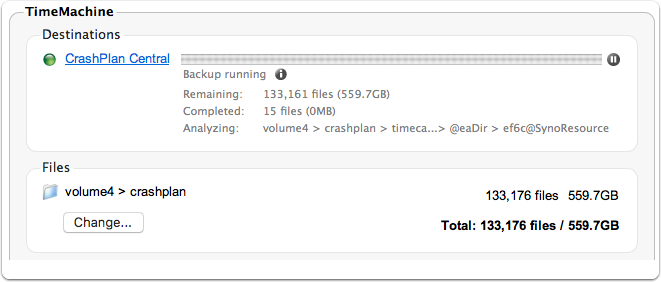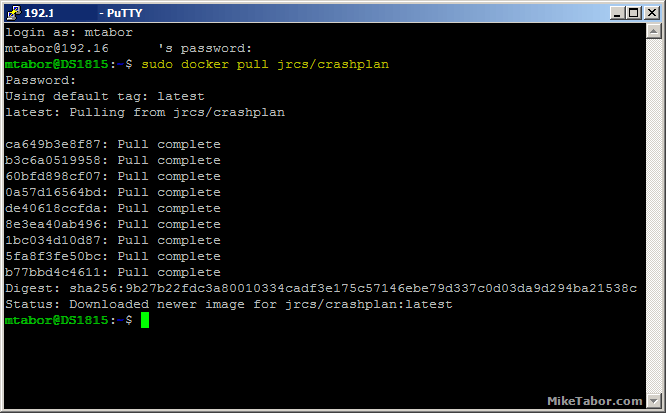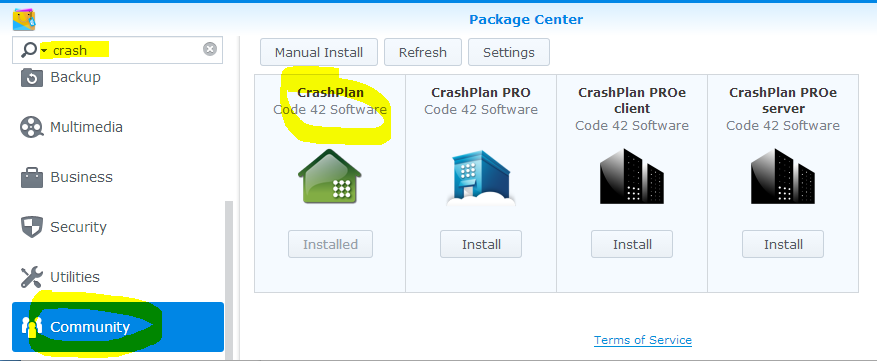

Consult your operating system documentation for information on mounting the drive to your device.

On a Mac, NAS drives and other network drives must be mounted to your device in order for the CrashPlan app to access them. Therefore, we cannot predict performance problems or other issues that may arise from use of particular NAS devices. If the amount of data on your NAS device exceeds 1 TB, see Adjust CrashPlan app settings for memory usage with large backups (CrashPlan for Small Business).
The CrashPlan app can struggle to back up NAS devices containing many terabytes of storage. To minimize the number of these files, change the default Backup changes every setting from 15 minutes to one hour and deselecting the Back up open files setting. Locked or open files may not be backed up reliably. If the NAS device is shared by multiple users, it increases the possibility of locked or open files. Backing up files that reside on a NAS device results in slower backup performance because each data block must be translated into a network packet. The CrashPlan app backs up real-time file changes only on the device where the CrashPlan app is installed. The CrashPlan app doesn't support real-time backup on network-attached drives. On Mac and Linux, the CrashPlan app can only back up files stored on a NAS when the file verification scan runs. To remedy the problem, see External drive stops backing up on Mac (CrashPlan for Small Business). A NAS device can stop backing up on a Mac if the device fails to mount properly. This is due to an operating system-level restriction built into Windows. CrashPlan doesn't support backing up NAS on Windows. This article provides information about mounting NAS on the supported operating systems. 
Storage must be mounted in order for the CrashPlan app to access it.

CrashPlan supports backing up files that reside on network attached storage (NAS) on Mac and Linux.








 0 kommentar(er)
0 kommentar(er)
